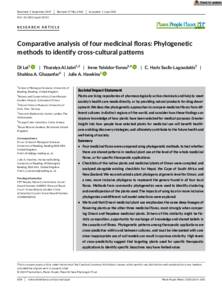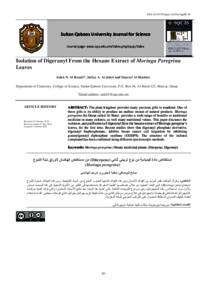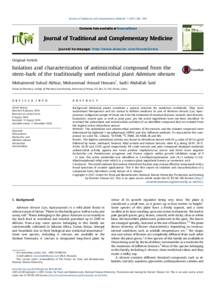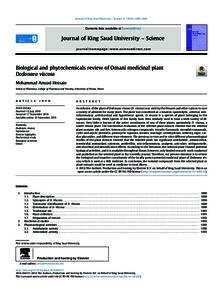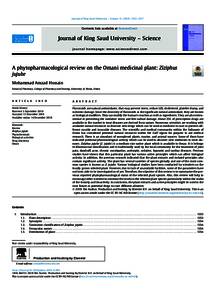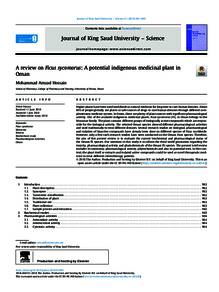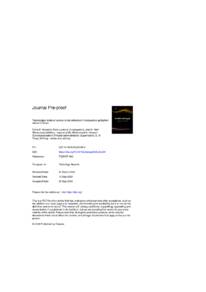وثيقة
Comparative analysis of four medicinal floras : phylogenetic methods to identify cross-cultural patterns.
المعرف
DOI: 10.1002/ppp3.10131
المصدر
Plants People Planet. v. 2, 6, p. 614-626
المساهمون
Al-Jabriyah, Thuraiya., مؤلف
Teixidor-Toneu, Irene., مؤلف
Ghazanfar, Shahina A. , مؤلف
Hawkins, Julie A., مؤلف
الدولة
United Kingdom.
الناشر
Blackwell Publishing Ltd.
ميلادي
2020-11-01
اللغة
الأنجليزية
الملخص الإنجليزي
Plants are living repositories of pharmacologically active chemicals and help to meet society's health care needs directly, or by providing natural products for drug development. We describe phylogenetic approaches to compare medicinal floras from different cultures in distinct regions of the world, and consider how these findings can improve knowledge of how plants have been selected for medical purposes. Greater insight into how people have selected plants for medicinal use will benefit healthcare and drug discovery strategies, and ultimately contribute to the future health and well-being of society. Summary: Four medicinal floras were compared using phylogenetic methods, to test whether there are shared patterns in medical plant use at the level of the whole medicinal floras, or for specific therapeutic applications. Checklists of the native plants and medicinal plants of Oman were compiled, and analyzed alongside existing checklists for Nepal, the Cape of South Africa and New Zealand. We reconstructed a plant phylogeny at generic level for Oman, and a new, more inclusive phylogeny to represent the genera found in all four local floras. Methods from community phylogenetics were used to identify clustering and overdispersion of the plants used. The impacts of using local or more inclusive phylogenies and different null model selections were explored. We found that Omani medicinal plant use emphasizes the same deep lineages of flowering plants as the other three medicinal floras, most strongly when comparing Omani and Nepalese medicinal plants. Drivers of this similarity might be floristic composition, opportunity for exchange of knowledge and shared beliefs in the causation of illness. Phylogenetic patterns among therapeutic applications are cross-predictive within and between cultures, and must be interpreted with care since inappropriate use of null models can result in spurious similarity. High levels of cross-predictivity suggest that targeting plants used for specific therapeutic applications to identify specific bioactives may have limited value. We outline the questions that might be addressed using a global phylogeny and medicinal plant checklists, suggest the best methods for future studies and propose how findings might be interpreted.
ISSN
2572-2611
قالب العنصر
مقالات الدوريات

